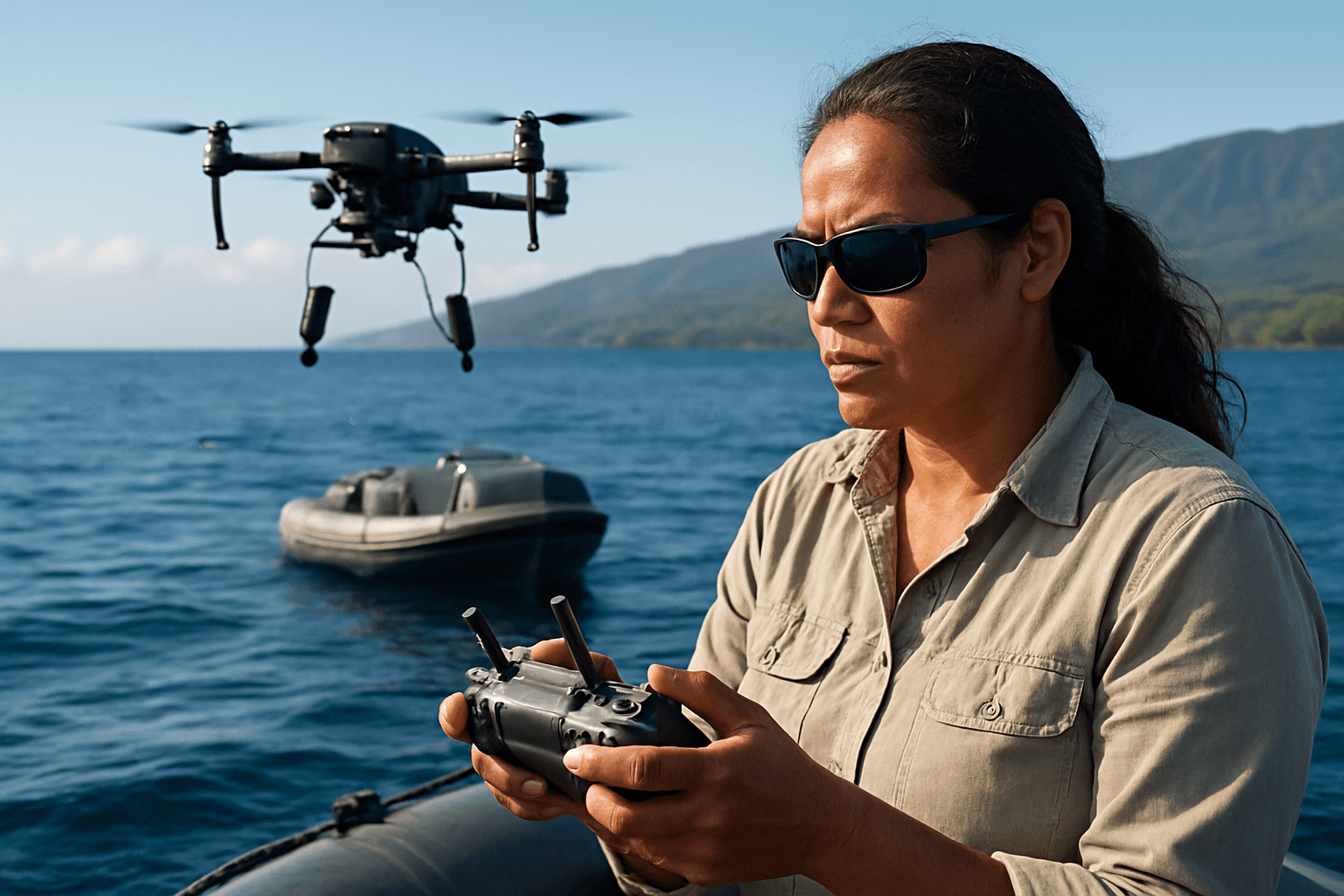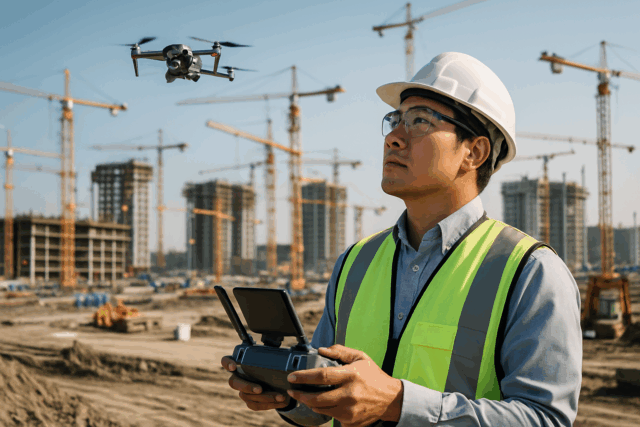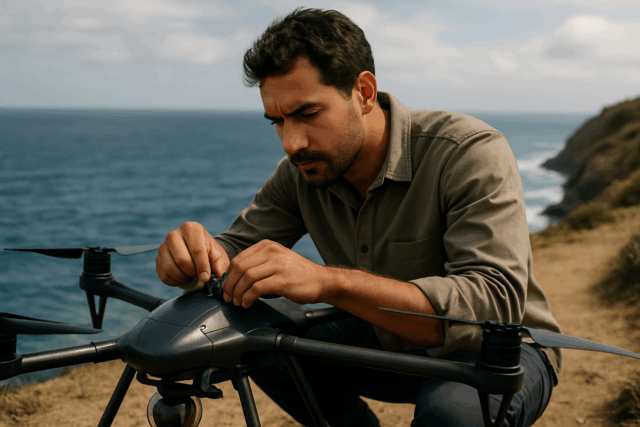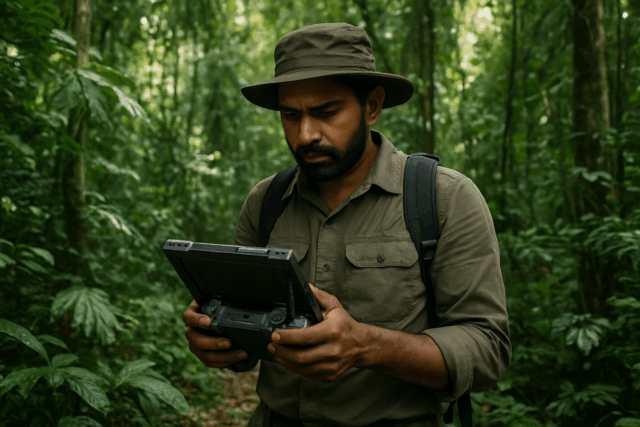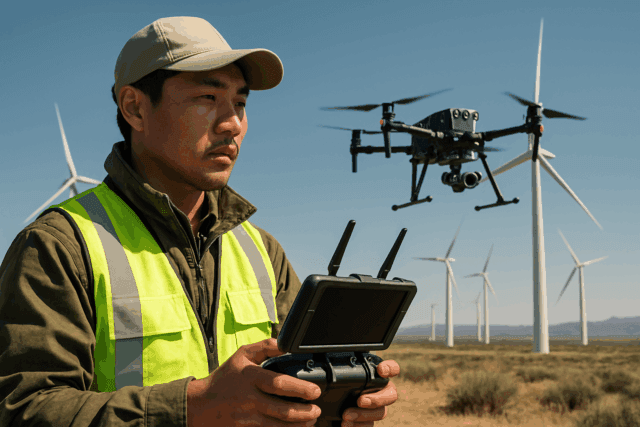The vast and often enigmatic world of marine mammals presents significant challenges for researchers striving to understand their behavior, distribution, and overall health. Traditional monitoring methods, such as ship-based surveys or human-crewed aircraft, are frequently costly, time-consuming, and can inadvertently disturb the very animals they aim to study. However, a new era of marine research is emerging with the advent of drone-based acoustic monitoring, offering unprecedented opportunities for non-invasive, efficient, and detailed insights into the underwater soundscapes of our oceans.
The Limitations of Traditional Marine Mammal Monitoring
For decades, marine biologists have relied on a combination of visual observations and passive acoustic monitoring (PAM) using static hydrophone arrays or vessel-towed hydrophones to study marine mammals. While these methods have yielded invaluable data, they come with inherent drawbacks. Ship-based surveys are expensive, require significant personnel, and the noise generated by motorized vessels can interfere with acoustic recordings and even alter animal behavior, leading to biased data. Manned aircraft face similar cost and disturbance issues, in addition to safety risks for human operators in remote or adverse conditions. Stationary hydrophone arrays, while effective for continuous monitoring in a fixed location, lack the mobility to cover large, dynamic areas or respond to transient events.
Drones: A Game-Changer for Acoustic Data Collection
Unmanned aerial vehicles (UAVs), commonly known as drones, are transforming marine mammal research by providing a safer, more cost-effective, and less intrusive alternative or complement to traditional methodologies. Drones offer an aerial perspective that can reduce bias caused by animals being out of sight underwater and provide a permanent record through high-resolution imagery.
Types of Drones Used in Marine Research
Two primary categories of drones are employed in marine mammal studies:
- Rotary-wing UAVs: These drones, characterized by multiple propellers, offer vertical take-off and landing capabilities and excellent maneuverability, making them suitable for monitoring smaller coastal populations and detailed behavioral studies at lower altitudes (20-60 meters).
- Fixed-wing UAVs: Designed for longer endurance and faster flight, fixed-wing drones are better suited for covering larger areas during line-transect surveys to assess abundance and distribution of geographically dispersed marine mammal species at higher altitudes (75-735 meters).
Integrating Acoustic Sensors: The Flying Hydrophone
The true innovation lies in equipping these UAVs with advanced acoustic sensors, primarily hydrophones. Hydrophones are specialized microphones designed to detect and convert underwater sound waves into electrical signals, enabling researchers to perform acoustic data analysis. When integrated with drones, these “flying hydrophones” offer significant advantages:
- Passive Acoustic Monitoring (PAM): Drones can carry passive hydrophones to listen for marine mammal vocalizations without actively emitting sound, allowing for the detection and identification of species and the study of their acoustic behavior.
- Targeted Deployment of Tags: Drones can also be used to deploy digital acoustic tags on marine mammals, providing detailed data on individual animal behavior and ecology. This non-invasive method has seen success in tagging endangered species like sei whales.
- Real-time Monitoring: Advances in technology, including machine learning and AI, are enabling real-time detection, classification, and localization of marine mammal vocalizations from drone-collected data, allowing for immediate conservation actions.
Advantages of Drone-Based Acoustic Monitoring
The benefits of utilizing drones for marine mammal acoustic monitoring are multifaceted:
Reduced Disturbance and Non-Invasive Approach
One of the most significant advantages is the minimization of disturbance to marine mammals. Drones can operate from a safe distance and at altitudes where their noise is less likely to impact cetaceans significantly, especially compared to larger, louder vessels. Studies suggest that the underwater noise generated by small- and medium-sized UAVs is often below ambient noise levels, and many marine mammals show limited behavioral responses to drone approaches at appropriate altitudes.
Cost-Efficiency and Enhanced Safety
Drones offer a more economical solution than manned aircraft or research vessels, reducing expenses related to fuel, crew, and maintenance. Furthermore, they eliminate the need to place human personnel at risk in challenging marine environments or during adverse weather, improving safety for researchers.
Accessibility and Data Quality
UAVs can access remote and difficult-to-reach areas, expanding the scope of marine mammal research. They provide high spatial and temporal resolution data, and the collected footage and acoustic recordings constitute systemic, permanent data that can be reviewed by multiple experts. This can increase the accuracy of group size estimates and provide more precise geographical locations of sightings.
Challenges and Considerations
Despite their promise, drone-based acoustic monitoring systems face several challenges:
- Battery Life and Endurance: The autonomy and flight duration of current UAVs can be a limitation, especially for long-range or extensive surveys. Fixed-wing drones generally offer greater endurance than rotary-wing models.
- Environmental Factors: Weather conditions, such as high sea states, glare, and visibility, can affect data collection and drone operation. Resistance to the harsh marine environment is also a key concern for drone durability.
- Data Processing and Analysis: The vast amounts of data collected by drones require significant processing time, although AI-assisted data processing is helping to automate detection and identification.
- Regulatory Hurdles: Operating drones, especially in coastal and marine protected areas, involves navigating national and international regulations regarding flight height, restricted zones, and obtaining necessary authorizations.
- Noise Disturbance: While generally less disturbing than vessels, drone noise can still be a concern, particularly at low altitudes or for species with sensitive hearing. Researchers are actively studying the underwater acoustic profiles of different drone models to minimize potential impacts.
The Future of Drone-Based Marine Mammal Monitoring
The field of drone-based acoustic monitoring is rapidly evolving. Future developments are likely to include:
- AI and Machine Learning Integration: Further integration of AI for automated detection, identification, counting, and even abundance estimation of species will reduce data processing time and enhance monitoring capabilities.
- Advanced Sensors: Development of more sophisticated and compact hydrophones and sensor packages will improve detection capabilities and data quality.
- Increased Autonomy and Endurance: Improvements in battery technology and drone design will lead to longer deployment durations and greater range, allowing for more comprehensive surveys.
- Integrated Systems: Combining drone-based acoustic monitoring with other autonomous vehicles, such as uncrewed surface vehicles (USVs) and autonomous underwater vehicles (AUVs), will create comprehensive, multi-platform monitoring networks.
- Broader Applications: Beyond basic monitoring, drones will continue to expand their role in collecting biological samples (e.g., whale blow), assessing health through photogrammetry, and studying fine-scale behavioral patterns.
Conclusion
Drone-based acoustic monitoring represents a significant leap forward in marine mammal research and conservation. By offering a non-invasive, cost-effective, and highly adaptable platform for collecting critical acoustic data, these robotic pioneers are unlocking new possibilities for understanding and protecting the ocean’s most charismatic inhabitants. As technology continues to advance, drones, armed with sophisticated hydrophones and intelligent software, are set to become indispensable tools in our ongoing efforts to safeguard marine biodiversity and manage our oceans responsibly.

